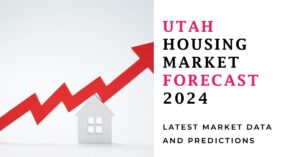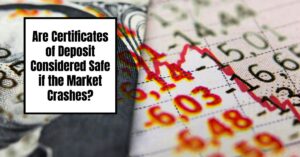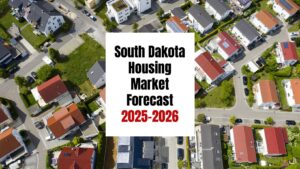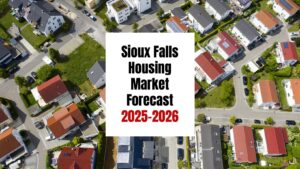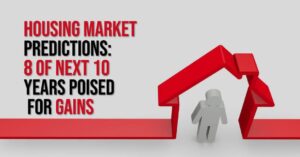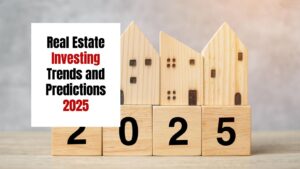Are you curious about the Utah housing market trends? Thinking about buying or selling a home in Utah? Then you've come to the right place! The Utah housing market showed a 2.9% rise in home sales statewide in September, with notable county variations. Median home prices grew 4.1% overall, though high-demand areas saw more significant increases. Inventory levels remain tight in urban regions, influencing pricing trends and maintaining a competitive market for buyers.
Utah Housing Market Trends 2024
Home Sales: A Closer Look at Utah's Real Estate Activity
The Utah housing market is a tale of two halves in 2024. While the state as a whole experienced a slight increase in home sales compared to 2023, a closer look reveals significant county-to-county variation.
For instance, Salt Lake County, the most populous, experienced a modest rise in sales (+5.7%), reflecting consistent demand. Utah County, another major hub, also shows growth. Conversely, counties like Summit and Washington saw dips in sales, suggesting market saturation or shifts in buyer preferences.
This varied performance highlights the importance of understanding local conditions. While statewide trends provide a general picture, digging deeper into specific counties provides a more nuanced view. Don’t just look at the state numbers. Each county has its own personality, its own market micro-climate, if you will.
Table 1: Utah Home Sales by County (September 2023-September 2024)
| County | 2023 Sales | 2024 Sales | % Change |
|---|---|---|---|
| Beaver County | 8 | 1 | -87.5% |
| Box Elder County | 43 | 48 | +11.6% |
| Cache County | 102 | 102 | 0.0% |
| Carbon County | 28 | 18 | -35.7% |
| Entire State | 3,249 | 3,344 | +2.9% |
The fluctuations aren’t just random. Changes in interest rates, economic conditions, and even local job markets influence sales numbers. For instance, a booming tech sector in a particular county might drive sales upwards, while a decline in a traditional industry could suppress them. Remember to look at the bigger picture when analyzing these numbers.
Home Prices: Navigating the Ups and Downs of Utah's Real Estate Values
Now let's talk about something everyone is interested in: price! The median home price in Utah has shown a consistent positive trend. However, the rate of increase has slowed compared to previous years, indicating a possible shift from the rapid appreciation seen in earlier periods.
Again, though, county-level data paints a more complex picture. Some counties, particularly those with high-end properties, experienced notable price increases, whereas others experienced more modest gains or even slight decreases. This variation highlights the importance of localized market analysis.
One contributing factor could be the increasing inventory. When more homes are available, it can ease the upward pressure on prices. We'll talk more about inventory below.
Table 2: Utah Median Home Prices by County (September 2023-September 2024)
| County | 2023 Median Price | 2024 Median Price | % Change |
|---|---|---|---|
| Beaver County | $292,000 | $260,000 | -11.0% |
| Box Elder County | $420,000 | $439,995 | +4.8% |
| Cache County | $395,000 | $428,500 | +8.5% |
| Carbon County | $236,000 | $287,500 | +21.8% |
| Entire State | $487,900 | $508,005 | +4.1% |
The influence of interest rates on housing prices is significant. Higher rates often lead to decreased affordability, moderating price growth. Conversely, lower rates can boost affordability, potentially driving prices higher. This is a complex interplay of factors.
Housing Supply: Understanding Inventory Levels in the Utah Market
The level of housing available – what we call inventory – has a major impact on both sales and prices. A low inventory often leads to higher prices due to increased competition among buyers. Conversely, a higher inventory can lead to lower prices and potentially slower sales.
Utah's housing supply has been a hot topic in recent years. While some areas experienced increases in inventory, others remain tight. This supply shortage is a long-standing challenge, especially in popular urban areas.
Several factors affect supply: new home construction rates, conversion of existing properties, and even seasonal migration patterns. The mismatch between supply and demand continues to shape the Utah housing market. In high-demand areas, we are still likely to see a sellers’ market, which means that sellers typically have more leverage.
What does all this mean for the average Utahn? Well, it means we're moving away from the super-fast growth of the past few years. It's becoming a bit less frenzied, a bit more sane. But the good news is that, even with slowing growth, Utah remains a desirable place to live. The state's strong economy, outdoor recreational opportunities and a growing job market will continue to draw people to the Beehive State, keeping the market relatively robust.
My Opinion
I've been working in the Utah real estate market and I've seen firsthand the dramatic swings. The current trends suggest a more sustainable market is forming, although some areas will certainly experience higher volatility than others. Buyers should expect a bit more negotiation power now, but that also means that getting the right deal might require a bit more patience and careful research. My advice is to work with a knowledgeable real estate professional who can help you navigate the local market in your area.
Why Are Home Prices So High in Utah?
Utah boasts the nation’s strongest pace of job growth, along with rock-bottom unemployment, ultra-low mortgage rates, few mortgage delinquencies, and low state and local taxes. All those factors pushed Utah into first place in Bankrate’s Housing Heat Index for the fourth quarter of 2020. Utah's home values increased by 15.39% in the 12-month period that ended Dec. 31, third-best among U.S. states, according to the Federal Housing Finance Agency.
Since 1991 Q1, HPI for Utah has increased by 414.95%. Idaho ranked #1 in FHFA State House Price Indexes. The HPI is a broad measure of the movement of single-family house prices. It is measured by reviewing mortgage transactions on single-family properties whose mortgages have been purchased or securitized by Fannie Mae or Freddie Mac. According to a Bankrate analysis of Labor Department data, Utah also posted the second-strongest job growth in the nation from December 2019 to December 2020.
Even if inventory is significantly higher than it has been in the previous two years, it still does not address what has been a problem in Utah for years. There are still not enough houses. Even though homebuilding soared in Utah in 2021, putting the state on the national map for its housing boom. It made a decent dent in Utah’s housing shortage, but not enough to erase it.
Rapid population growth and job growth are the two most important drivers of housing demand in Utah right now. According to local real estate agents, there aren’t enough single-family homes to meet the rising housing demand. A balanced market has roughly a six-month supply of houses, which means that if we stopped listing new properties, we'd still have about six months before we ran out. And right now, Utah is down to about four weeks of supply of homes.
As a result, finding a dream house in this market is challenging for buyers, making it extremely competitive. Utah's employment landscape is also one of the most impressive in the country. It has had the most rapidly growing job market in the country for the past decade. Utah's population grew by 18.4% over the past decade, making it the fastest-growing state. It's now the 30th most populated state, with nearly 3.28 million people, according to U.S. Census Bureau data.
A large number of Californians are relocating to Utah, putting extra pressure on the supply side. In-migration to the Salt Lake metropolitan area is still at an all-time high. The issue is that demand is so strong that inventory can't reach a level that indicates a sufficient supply. People are also coming from New York, Boston, Vermont, Austin, Texas, and other cities, according to local real estate agents. They also think that people who are first-time homebuyers in Utah will be priced out of the market by people moving in from other states.
Utah Housing Market Forecast 2024-2025
Predicting the future is always tricky, but analyzing current trends helps paint a picture of what’s to come.
Based on the data we’ve reviewed, several key trends stand out:
- Moderate Price Growth: While prices are still increasing in Utah, the rate of increase is slowing, suggesting a transition to a more balanced market.
- County-Level Variation: It’s crucial to focus on specific counties rather than just state-wide averages, as market conditions can differ significantly.
- Impact of Interest Rates: Interest rates remain a key factor affecting buyer affordability and thus sales and price.
- Housing Supply Challenges: Shortages of housing inventory continue to pressure prices in many areas.
Utah Housing Market Outlook
Key Highlights
Average Home Value:
$517,550 (1.0% annual increase)
Days to Pending:
Approximately 25 days
Regions with Positive Forecasts by Sept 2025
| Region | Forecasted Growth |
|---|---|
| Vernal | 2.6% |
| Price | 2.9% |
| Heber | 2.4% |
Regions with Negative Forecasts by Sept 2025
| Region | Forecasted Decline |
|---|---|
| Provo | -0.2% |
| St. George | -0.5% (after initial -1%) |
Overall Market Sentiment
Market Outlook:
Moderate growth expected with some regional variation.
According to Zillow, the average Utah home value sits at $517,550 as of September 30, 2024, reflecting a 1.0% increase year-over-year. Homes are selling relatively quickly, going pending in approximately 25 days. This indicates a still-competitive market, although the pace has likely slowed compared to the frenzy of recent years. This slight slowdown is something I've observed across several Western states, likely influenced by rising interest rates.
Utah Housing Market Forecast: MSA Predictions
The following table provides a forecast for several Metropolitan Statistical Areas (MSAs) in Utah. These projections, based on Zillow data as of September 30, 2024, offer insights into potential price fluctuations through September 2025. Remember, these are just predictions, and the actual market performance can vary due to unforeseen economic factors or shifts in local conditions.
| Metropolitan Area | Oct 2024 Forecast (%) | Dec 2024 Forecast (%) | Sep 2025 Forecast (%) |
|---|---|---|---|
| Salt Lake City | 0 | -0.5 | 0.5 |
| Ogden | 0.2 | -0.2 | 1.2 |
| Provo | 0 | -0.7 | -0.2 |
| St. George | 0 | -1 | 0.5 |
| Logan | 0.1 | -0.1 | 1.6 |
| Heber | 0.1 | -0.3 | 2.4 |
| Cedar City | -0.2 | -0.9 | 0.5 |
| Vernal | 0.3 | 0.3 | 2.6 |
| Price | 0 | 0 | 2.9 |
Regions Poised for Growth and Decline
Based on the data, several areas appear primed for potential price appreciation. Vernal, Price, Heber, and Logan stand out with projected increases exceeding 1% by September 2025. This growth could be attributed to various factors, such as increased job opportunities, new developments, or improved infrastructure. In my experience, smaller markets like these can sometimes see larger percentage swings due to localized economic activity.
On the other hand, Provo, St. George, and Cedar City are projected to experience slight declines in the near term. This isn't necessarily a cause for alarm, as seasonal fluctuations can play a role. However, it's worth monitoring these areas to see if these dips are temporary or indicative of a longer-term trend.
Will Utah Home Prices Drop? Will the Market Crash?
The million-dollar question (or, in Utah's case, the half-million-dollar question) is whether we'll see a significant price drop or even a market crash. While no one has a crystal ball, the current data doesn't point to a looming crash. The projected changes are generally modest, with a mix of slight increases and decreases across different MSAs. The market may be cooling off from its recent peak, but a dramatic crash seems unlikely given the current economic conditions and relatively stable forecast.
Utah Housing Market Forecast 2026 and Beyond
Looking further ahead is inherently speculative. However, based on current trends and historical data, I anticipate continued moderate growth for the Utah housing market in 2026. Factors such as population growth, economic development, and the availability of housing inventory will significantly influence the market's trajectory. Keep an eye on these key indicators to gain a better understanding of the long-term outlook.
Key Takeaways for Buyers and Sellers
- Buyers: If you're considering buying in Utah, be prepared for a still-competitive market, although the pace may have slowed slightly. Do your research, get pre-approved for a mortgage, and work with a knowledgeable real estate agent.
- Sellers: Pricing your home strategically is crucial in the current market. While the market is still relatively strong, overpricing can lead to longer listing times.
